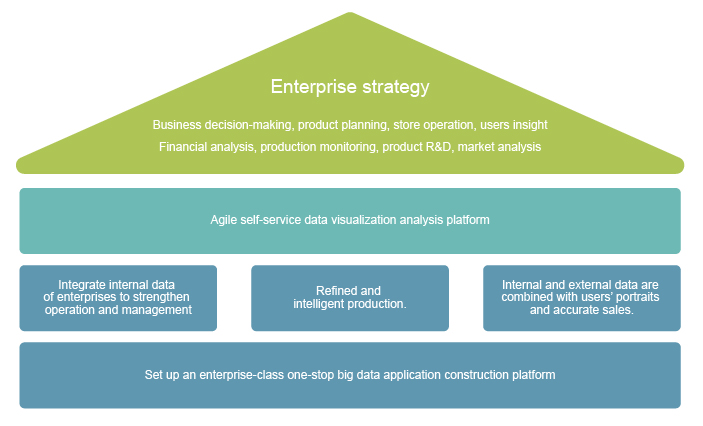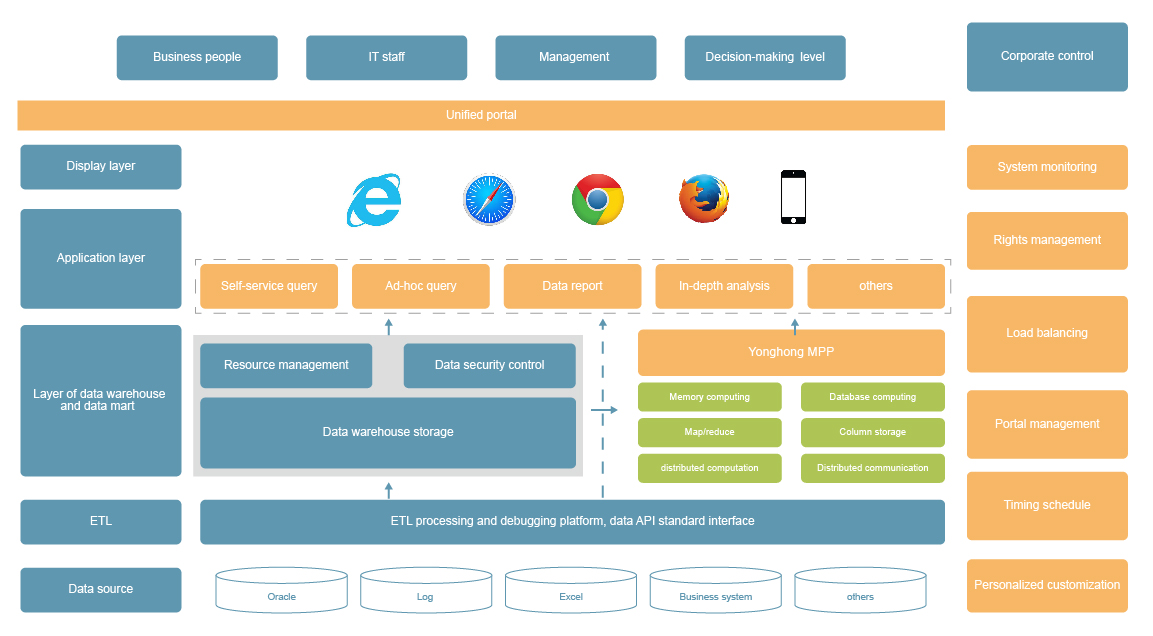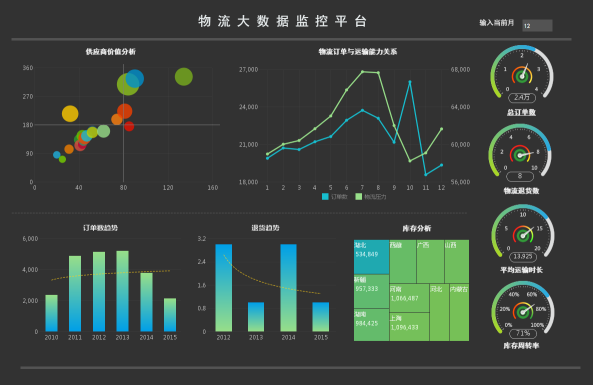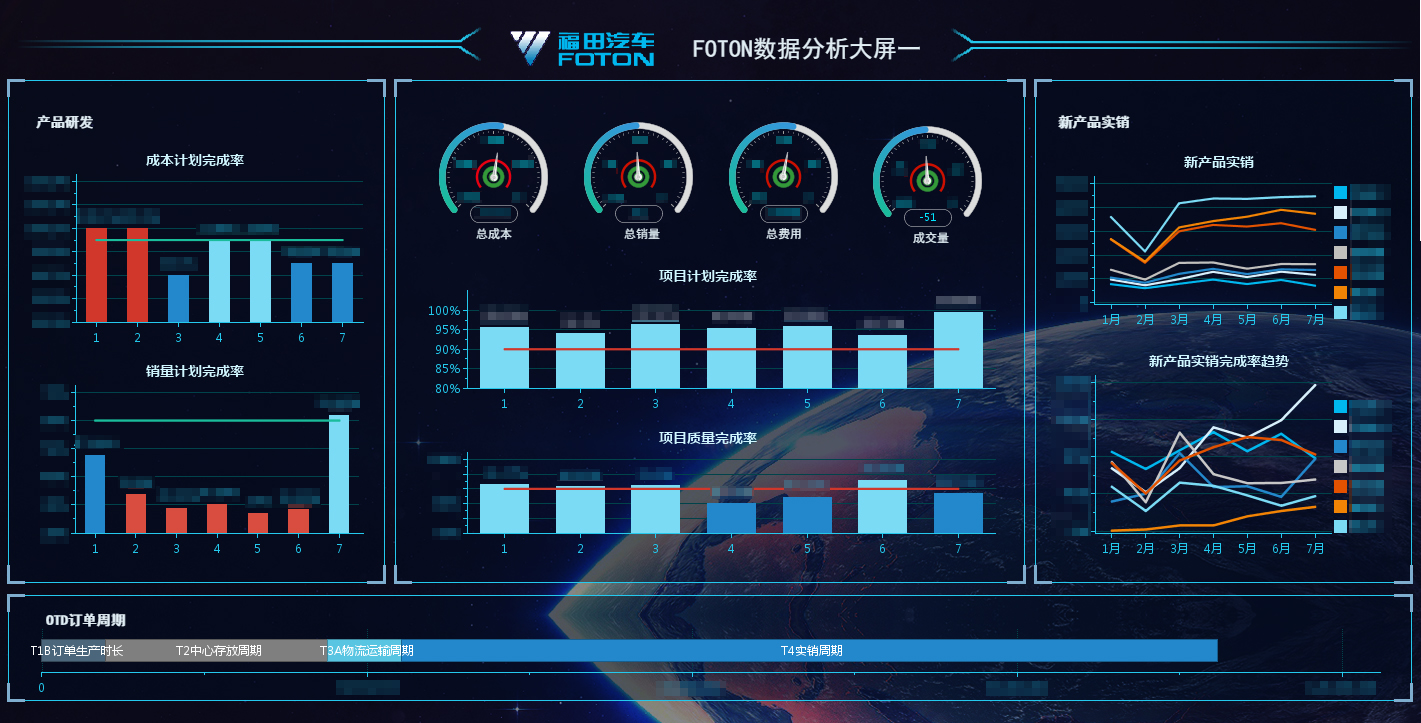
How to apply big data technology in manufacturing enterprises ?
The industrial Internet is the cornerstone and the big data are the engines for manufacturing enterprises to achieve the goal of intelligent manufacturing.
Solutions for manufacturing industry
In terms of the Chinese market, after several years of accumulation, most large and medium-sized manufacturing enterprises have established a relatively perfect basic information system, such as CRM, ERP, MES, MRP to help manufacturers to collect a large amount of historical data. At the moment when we have stepped into DT from IT era, corresponding changes have taken place in the operation of the enterprise, from the initial extensive operation to elaborate operation.
1. Extensive operation
The past “subjective management decision-making” still continues, and the data are shown in the fixed report from the views of strategic management of the enterprise, enterprise management, financial management, warehousing supply chain but not actually analyzed.
2. Severe data island
Along with gradual perfection of information technology, the financial information system, MRP system, ERP system, etc., are gradually improved, but there is not sufficient unified platform to associate, integrate and link data among internal information systems, which results in that various sections such as production, marketing and inventory, etc., can't cooperatively work together to fully release the true value of the data.
3. Lack of data management mechanism and guarantee
Enterprises have accumulated a certain amount of historical data, but resulting from lack of initial planning for data management mechanism, data quality is uneven, basic data are disperse or separate and inconsistent, which is difficult to provide support for data statistical analysis application at the upper layer .
4. Slow response to the need for data analysis
Users at different levels have completely different needs for data analysis, however, with single analysis dimension, in simple and hidebound format, the analysis reports that manufacturing enterprises can provide are mainly forms, and fail to meet users’ demand for fast and flexible data analysis due to poor efficiency of response to analysis demand.
5. The project requires high cost and has high risk
For owners of manufacturing enterprises, they are expecting to make at least 100 RMB as profit value from a system if they cost 10 RMB to construct the system. After a long period of data warehouse construction and modeling phase, the traditional big data platform, with high project cost, slow effect and high risk, is still unable to show the value brought by data to the senior leadership, therefore, a lot of manufacturing enterprises shrink back and dare not to make too much investment from beginning to end.

Base on the enterprise-class one-stop big data application construction platform to integrate the internal and external data of enterprises, strengthen the management of enterprise data assets, and realize links of data in various fields.
business personnel use self-service data visualization analysis technology to explore date value, quickly build data application, realize strategic objectives in the areas of enterprise management decision-making, product research and development, store operations, finance, marketing and production, etc.

The technical architecture of the entire platform includes the following five layers.
1. Data source layer: connect data from different business information systems and channels to realize the correlation and integration of heterogeneous data sources.
2. ETL layer: define unified data API standard interface, to clean, transform and load data.
3. Layer of warehouse and mart: store the details of detailed and specific data after ETL in the data warehouse in a star or snowflake shape, sort topics of data models according to the demand of business analysis topic,and pour them into Yonghong MPP data mart for accelerating operation.
4. Application layer: for business personnel at different levels and analysis topic requirements, we set up rich data application scenarios such as ad-hoc query, multi-dimensional analysis, data report and in-depth analysis,etc.
5. Display layer: in rich and perfect charts, by flexible method of interaction, the analysis results are presented to decision-making level, management, IT professionals and business users, and all users can access the system through the major browsers or mobile terminals.
1. Definition of strategic goals
Strategic goals may be ambitious or not, and departments or working groups have their own targets as well. Then, from the point of view to implement and practise big data project, requirement is the most important, and data applications cannot be properly managed without analysis and abstraction of the target.
2. Build data analysis index system.
Analysis indicators, as the lubricating oil flowing through the overall digital operation system from beginning to the end and a connector between business and original data, result from the original data after processed and in turn drive other data application products. Enterprises have to sort business analysis indexes, establish a set of standard index system of data analysis, clearly define caliber and meanings of indicators,and standardize management on indexes,so as to guarantee consistent data statistics caliber and accurate results.
3. Set up data analysis and application.
Construct a set of standardized, intelligent and movable center of data classification and application in stages and offer corresponding data application service to staff at different levels within enterprise,so as to provide corporate executives with digital decision support and risk monitoring while meeting the demand of data analysts for daily statistics and analysis, and concise statement and indicators to help managers to gradually change data processing to data analysis.
4. Implementation and practice of data project
The construction for implementation and practice of big data projects, instead of large and allinclusive, should continue step by step and gradually release the data value in the process to carry out the project. For the enterprises, they may set up a grand blueprint for the big data application in the coming next few years,but they have to gradually and rapidly decompose it in implementation process. For the enterprise administrators in charge of big data projects, risk management and control over big data projects are also very necessary.





1. Yonghong one-stop big data application construction platform greatly cuts down the threshold for construction of data application, contributing to an experience in construction of data application like building blocks. A large number of applications and users caught by manufacturers drive value realization of business and management to vitalize data and underlying infrastructure, then their business grows larger and larger in a virtuous circle, giving full play to enormous value that data brings to manufacturers.
2. It promotes application of big data analysis technology within enterprises, helps them to improve the accuracy and timeliness of data, innovation of management and operation and their decision-making level, reduce the risk of enterprise operation, and further explore the possibility of discovering market segmentation.
3. It helps enterprises to establish a data operating system, and truly realize data-driven decision-making (decisions made through data are better than conventional decisions). Through the data operation, the business personnel transform the data into operational strategy, so as to judge the trend and carry out effective action, and help themselves to find problems and promote presentation of innovation or solution.